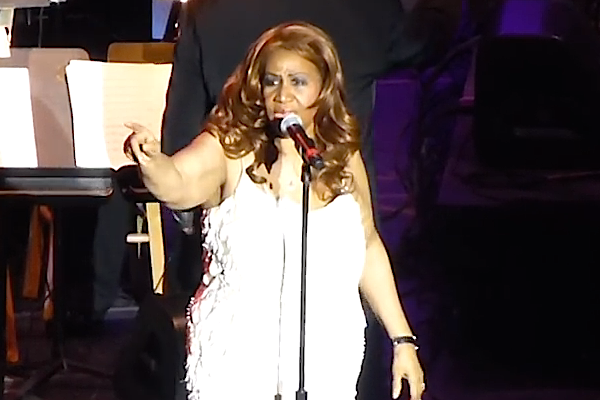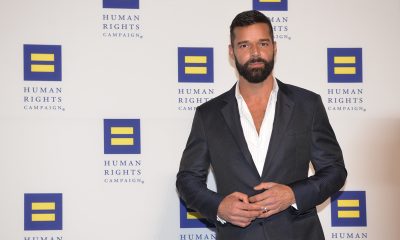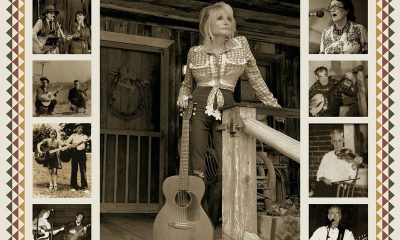a&e features
Aretha’s triple whammy
Queen of Soul’s on a roll with great local concert, her best new album in years (and a book she wishes had never seen the light of day)
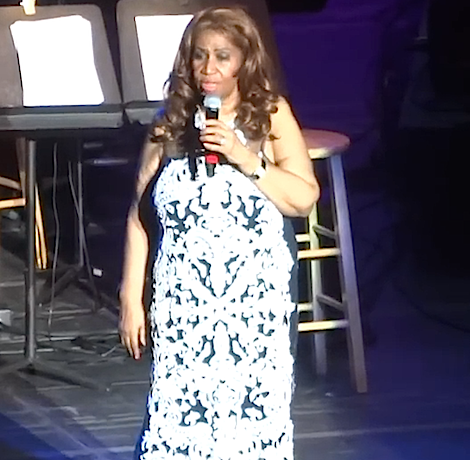
It wouldn’t be an Aretha Franklin concert without at least one head-scratching oddity. For the legendary diva’s latest concert in our region — last Thursday’s show at the Lyric in Baltimore — she came up (sure ’nuff!) with a real winner: for no apparent reason, she sang the encore “The Way We Were” off stage.
For the first minute or so, I suspected it might be a recording and that she was simply too lazy to sing her encore live. If you’ve followed the Queen for any length of time, this notion is hardly outside the realm of possibility. Many others suspected the same as the approximately 98 percent-capacity crowd started pouring out of the theater in droves. But just as many were calling it a night, Franklin — still off stage — inserted a few geographically specific ad libs to the song. It was just another “WTF” moment in a legendary six-decade career (seven if you count her teenage gospel debut) that has been, especially in the last 15-odd years, as noted for its eccentricities and oddities as its music.
These quirks are not as random as they may seem at first glance. With Franklin, who’s actually a lot more predictable than is widely acknowledged, her musical genius — and it truly is genius — is pretty much proportionate inversely with her indulgences, eccentricities and career- and relationship-sabotaging whims. A lifetime in show business has her well informed on just how much she can get away with and how much she has to deliver to keep the world eating out of her hand.
She did return, for a few fleeting moments, to wave good night while her orchestra — in another baffling choice — closed the show with a rousing instrumental rendition of the old warhorse “There’s No Business Like Show Business.”
It’s actually a great time to be an Aretha fan. Late last month she released her best album since 1998 (there’ve only been a few) with the all-covers set “Aretha Franklin Sings the Great Diva Classics.” Galaxies better than the interminably delayed 2011 train wreck known as “Aretha: A Woman Falling Out of Love,” Franklin — a singer known for her way with covers throughout her career — tackles stalwarts like “I Will Survive,” “I’m Every Woman,” “Midnight Train to Georgia” and, most notably, Adele’s “Rolling in the Deep,” which she tore up in a live performance on “Late Show with David Letterman,” a performance that went viral in September.
But if last week’s Baltimore concert — more on that in a bit — and the new album are the first two pieces of a modern Aretha trifecta, the third is a controversial pork chop for the ages that will be discussed and debated for decades — no exaggeration — to come: David Ritz’s towering biography “Respect: the Life of Aretha Franklin,” which dropped just days after her album in October.
At first glance, it’s easy to prematurely dismiss the book as a character assassination of almost “Mommie Dearest” proportions (not quite, but almost). The backstory is delicious: Ritz, having co-written Franklin’s 1999 memoir “Aretha: From These Roots,” laments in the “Respect” intro that he wasn’t able to crack the famously private Franklin facade. The ’99 book, although still a priceless piece of Franklin history in many ways, is about as honest and forthright as its heavily airbrushed cover photo (Franklin’s wildly fluctuating weight has dogged her for years, yet the cover makes her look more like Iman than herself at the time).
“In my view,” Ritz writes in the new book, “my two years of working on ‘From These Roots’ resulted in my failure to actualize the great potential in Aretha’s narration. I didn’t do what I set out to do. Since the publication of the book some 15 years ago, I have not rested easy. It took me a decade to recommit myself to the Aretha story, knowing that this time around, I would have to fly solo.”
What results is a no-holds-barred dishfest that has had media outlets as far ranging as the Daily Mail and Gawker regurgitating its bitchiest passages (which are legion). From family fights with her sisters Carolyn and Erma (also both singers) to passive-aggressive intransigence and egotism gone mad working with collaborators such as Luther Vandross and producer Oliver Leibert, to endless canceling of engagements at the 11th hour, a habit that cost her dearly in the courtroom and drove former booking agent Ruth Bowen (a priceless source of Aretha legend, quoted here at length) nearly mad, “Respect” drips with unflattering tale after tale, the cumulative effect of which is damning, yes, but also rather sad. If even a tenth of its stories are true, Franklin is still an egomaniacal control freak who’s impossible to deal with.
Modern-day Franklin would seem, at first glance, to be quite a different story. Having quit drinking and smoking many years ago and now having her weight under control after a mystery illness in the fall of 2010 — an episode she masterfully spun into an extended testimony/gospel vamp improvisation complete with de rigueur miraculous recovery that found her trotting Holy Ghost-style (the crowd ate it up) at last week’s show — one would like to think Franklin is at peace. Sadly, Ritz says that’s hardly the case. Although long banished from her inner circle, he makes a strong case now that she’s an imperious monster surrounded by yes people who don’t dare cross her. Beset by irrational fears — from her refusal to fly to her her habit of paying her band members cash which she carries around in a purse that’s never out of her site (an assistant both brought it out before Thursday’s show and retrieved it just as she left the stage so it was never out of her sight) — Ritz paints a portrait of a controlling and impulsive woman incapable of self scrutiny or critique.
Franklin, of course, begs to differ. She told the Wall Street Journal last week the book was “a book of trash” and nothing but “lies, lies and more lies.” News broke this week that she’s considering legal action.
It’s an interesting conundrum because the book is not the crucifixion either Franklin or the more salacious outlets would have you believe. What’s been totally lost in the discussion — hardly a surprise — is the book’s many passages of balancing anecdotes. Even those who share the book’s most unflattering tales — Carolyn, Erma and Bowen chief among them — are also some of Franklin’s most loyal compatriots.
“My sister was always engaged in acts of kindness and charity that went unreported,” Ritz quotes Erma as having said. “She and I would be watching the late news. There’d be a story about a woman who lost her home in a fire and the next thing you knew, Aretha was on the phone to the news station getting the woman’s number. The next day she’d send her a check for thirty thousand dollars.”
Brother and former manager Cecil is quoted as calling Aretha “an open-hearted person” and one who “always wanted to help her family.” One gradually senses that Aretha is, at heart, a good person and altruistic when push comes to shove.
Many moments of sheer and utter joy are recalled such as one where Erma, singing backup for Aretha in the studio, remembers her sister cutting — in a mind-boggling display of brilliance — the hits “Day Dreaming” and “Rock Steady” on the same day.
“That was a marvelous day,” she says. “Aretha absolutely tore up the vocal. We knew it was an instant classic.”
Anytime a highly unflattering celebrity biography comes out — one thinks of everything from J. Randy Taraborrelli’s “Call Her Miss Ross,” Christopher Ciccone’s “Life With My Sister Madonna,” Carol Ann Harris’s “Storms: My Life With Lindsey Buckingham and Fleetwood Mac” and many others — everyone debates the perceived verisimilitude of the books. Although opinions vary wildly — Taraborrelli even amended in a way, his Diana Ross books with a later, more balanced effort (2007’s “Diana Ross: a Biography”) — most would concur where there’s smoke, there’s at least some fire.
Groomed and mollycoddled by a doting father (the legendary Rev. C.L. Franklin) and armed with enough Grammys, RIAA certifications and life achievement awards (Rolling Stone even voted her the best singer of all time — an accolade she’s sure to have pointed out every time she’s introduced), it’s easy to see how someone like Franklin could manage to live in her own little world, largely immune to anything she wishes to ignore. (A curious side note: Ritz quotes Carolyn as saying how happy she was to hear of the Stonewall riots in 1969; Aretha, who has supported gay causes in more recent years, initially “found the topic distasteful,” Ritz says.)
The best argument against Ritz’s book, which has gotten strong reviews in USA Today and the New York Times, is that the vast majority of the people he quotes, such as Aretha’s siblings and the voluminously quoted Bowen, are dead.
“He offers no proof that he interviewed them,” says Roger Friedman, writing for showbiz411.com. “Ritz wrote a whole book about Ray Charles. But none of the Ray Charles info in ‘Respect’ was in the Ray book. Suddenly a dead Ray Charles has a whole lot of new quotes about Aretha Franklin.”
It’s a good point, but hardly a damning one. Having co-written a whole book with Charles, (1978’s “Brother Ray”), it’s wholly conceivable that the two spent many hours together and that Ritz could have substantial outtakes Charles either didn’t want in his own book or one party or the other didn’t think were pertinent.
Also curiously absent are the slightest comments or input from any of Franklin’s four sons, two of whom (again, oddly) are pictured with her in the booklet for her new album. It’s debatable the degree to which Franklin herself actually raised these boys, two of whom were born when she was a teen. A passing reference from sister-in-law Earline notes that at one point in the early ‘70s, “Clarence and Eddie were back in Detroit being cared for by Big Mama (Franklin’s grandmother),” and “Teddy was being raised by his father’s folks.” While Teddy played guitar for his mom for years, at times hawking his own recordings outside her shows, the Franklin children are largely a mystery. While Diana Ross counters much of her negative press with united-front photos of her with all five smiling grown children in tow every time she gets an award, I don’t know that a single photo of Franklin with all four of her boys has ever surfaced publicly (Tina Turner’s grown sons are equally as low-key and almost never seen).
This absence of comment is telling. A historian as thorough as Ritz surely tried to get their input. There are a few other flaws with “Respect.” Although perhaps unavoidable considering Ritz knows Franklin personally and witnessed some of the incidents first hand, the shifts into first person are jarring. And there are curious omissions. For all the talk of Aretha’s heavily religious (albeit liberal) formative years, we leave without the slightest sense of whether she has been much of a church goer in her adult years or, if celebrity and travel prevent it, where she gets her spiritual needs met now. Bishop Carlton Pearson was her guest at her 2012 Washington concert at DAR Constitution Hall and her faith background is essential to her persona. And although her appearance on a 1994 episode of “Saturday Night Live” might be seen as a minor matter overall, it gives an interesting insight into the legend. Perhaps compensating for a not-quite-ready-for-prime-time guest host Nancy Kerrigan (fresh off the ’94 Olympics) Franklin, in addition to being that week’s musical guest, also hilariously spoofs her persona in a mock BET interview sketch. If nothing else, it shows Franklin does not always take herself as seriously as Ritz and his flock of mostly dead mudslingers would have you believe. And she hardly sings her hit “Angel” at every concert as Ritz posits: in fact the only time she’s sung it at any of her D.C. concerts in the last decade was at her summer 2011 show at Wolf Trap.
Aretha’s cousin and long-time back-up singer Brenda Corbett, very much alive yet not in her usual spot at last week’s concert, is, however, quoted and is as forthcoming and candid as Carolyn and Erma (both, along with brother Cecil, sadly gone) were.
“I’ve been singing background with my cousin for some 42 years,” Ritz quotes her as saying. “And I still don’t know — record from record or concert from concert — where she’s going to hire me or fire me. Months will go by when she cuts off all communication with me. She’s furious with me and I never know why. Then she’ll call and we’re back together like nothing ever happened.”
It’s a pattern Ritz says happens over and over with family and longtime associates. And like abuse patterns — when many people over decades have eerily similar stories — the tales gain traction.
Ritz’s book ultimately succeeds because it holistically presents a balanced psychological portrait of the great legend. It’s an unexpectedly satisfying unofficial companion to Anthony Heilbut’s brilliant 2012 book “The Fan Who Knew Too Much: Aretha Franklin, the Rise of the Soap Opera, Children of the Gospel Church and Other Meditations.” Though only part of it focuses on Franklin, it’s the most contextualizing thing about her that’s ever been written. Ritz also deserves credit for having the balls to publish this while Franklin (72) is still alive. He could easily have taken the Darwin Porter (known for his trashy celeb bios always published within a year of the subject’s passing) approach, but he opted to forge ahead.
So what’s the deal with Aretha? Is it just Norma Desmond-ism — talent-plus-ego run amok?
Perhaps a quote from Carolyn sums it up best: “I think she was basically afraid that she wasn’t enough,” Ritz quotes her as saying. “Crazy as it sounds, she was afraid that she wasn’t good enough as a singer, pretty enough as a woman or devoted enough as a mother. I don’t know what to call it except deep, deep insecurity.
Ritz offers his own summation in the book’s coda. “In her troubled mind,” he writes, “control is the antidote to fear. She hires, fires and rehires a battery of publicists, booking agents and managers because, when all is said and done, she cannot relinquish control. … When these efforts fail, she deflects the blame. Self-scrutiny is not her way. Her methods of denial have been perfected over a lifetime.” He also writes, though, that she’s the “ultimate survivor, a symbol of strength” who “keeps moving forward, no matter what.”
Ritz also gains credibility to an extent because his love and admiration for the woman — of which he’s unabashed — comes shining through. His laments about the things he wishes Aretha would do, the career twists and turns he longs for her to have made, echo those expressed by many a gay man for the divas they love. With Franklin, it’s especially sad because the sheer magnitude of her greatest great moments indicate how much more she could have accomplished if she had personal discipline, the ability for introspection, a management team whose advice she heeded and better artistic instincts. Hers, unfortunately, have just as often let her down (like attempting a ballet routine at a Clive Davis tribute with a straight face) as reinforced or at times even expanded her legend (subbing memorably for an ailing Pavarotti at the ’98 Grammys).
His description of his ultimate dream for her furnishes a lovely, though bittersweet, moment: “I wanted her to realize a concert with only a superb jazz trio behind her as she sings George Gershwin and Cole Porter and the blues ballads of Percy Mayfield,” he writes. “I wanted her to sit at the piano and accompany herself as she revisits her best songs and the songs of Thomas A. Dorsey and James Cleveland and Curtis Mayfield” and to “put her performing and recording career in the hands of producers noted for impeccable taste, musical restraint and unfettered imagination.” They’re all things, sadly, that will likely never happen.
Leaving an Aretha concert, one has many similar thoughts. Her shows vary in quality — like Ritz, I’ve seen her on several occasions, merely going through the motions and serving up adequate, but hardly inspiring, renditions of her classic hits.
But catch her on a good night — and last Thursday was one — and there are magical moments to be had amidst the clutter (did we really need an on-stage presentation from the local Delta Sigma Theta chapter?) and repetition (she’s used Jackie Wilson’s “Your Love Keeps Lifting Me,” a song she’s never recorded, as her opening number for several years now; it’s a fine song she delivers solidly, but the lack of imagination considering her vast catalogue is inane).
Her cut from “Waiting to Exhale,” “Hurts Like Hell,” was a delicious surprise, that gave her a great little musical cushion upon which to unfurl her trademark melismas, “It’s Just Your Love” was a wildly unexpected deep album cut from the “Jump To It” album and the aforementioned testimony vamp had all the energy and passion one would expect from a soul legend and product of the church whose authenticity of faith has never been questioned.
Probably a little shy in terms of overall quality compared to her Nov. 2012 show at DAR (her last in the region), which included scintillating renditions of “Day Dreaming,” “Think” and “Something He Can Feel,” the Baltimore concert was still highly enjoyable. She looked resplendent in two different gowns and was far more spry and mobile than she was at her heaviest about five years ago. Even with the repetition, the woman truly never gives the same show twice. She mixes up her set list oceans more than her contemporaries like Dionne Warwick, Gladys Knight or Diana Ross, whose set list is essentially the same one she’s been using the last five years.
It’s all part of the joy and frustration of being an Aretha Franklin fan. As Ritz has learned the hard way, you either take the Queen on her terms or you don’t take her at all. Each person, fan and minion alike, has to decide for him- or herself if the sweet outweighs the bitter. Last Thursday night, it did.
- Overture (orchestra)
• Introduction of Aretha (8:52 p.m.) - Your Love Keeps Lifting Me Higher and Higher
- It’s Just Your Love
- Don’t Play That Song
- Hurts Like Hell
- Sweet 16
- gospel vamp/testimony
- Chain of Fools (w/ dancers)
- band jam — Another Star/band solos
• recorded track — Aretha returns dancing with Willie Wilkerson
• presentation from Delta Sigma Theta
• recognition of honored guests - Old Landmark
- I Remember (Keyshia Cole)
- Rolling in the Deep
- You Send Me (Aretha at the piano)
- Freeway of Love (with dancers)
- Respect (with dancers)
ENCORE - The Way We Were
- No Business Like Show Business (orchestra)
(show ends at 10:30 p.m.)
a&e features
Peppermint thrives in the spotlight
In exclusive interview, she talks Netflix show — and the need to resist Trump’s attacks
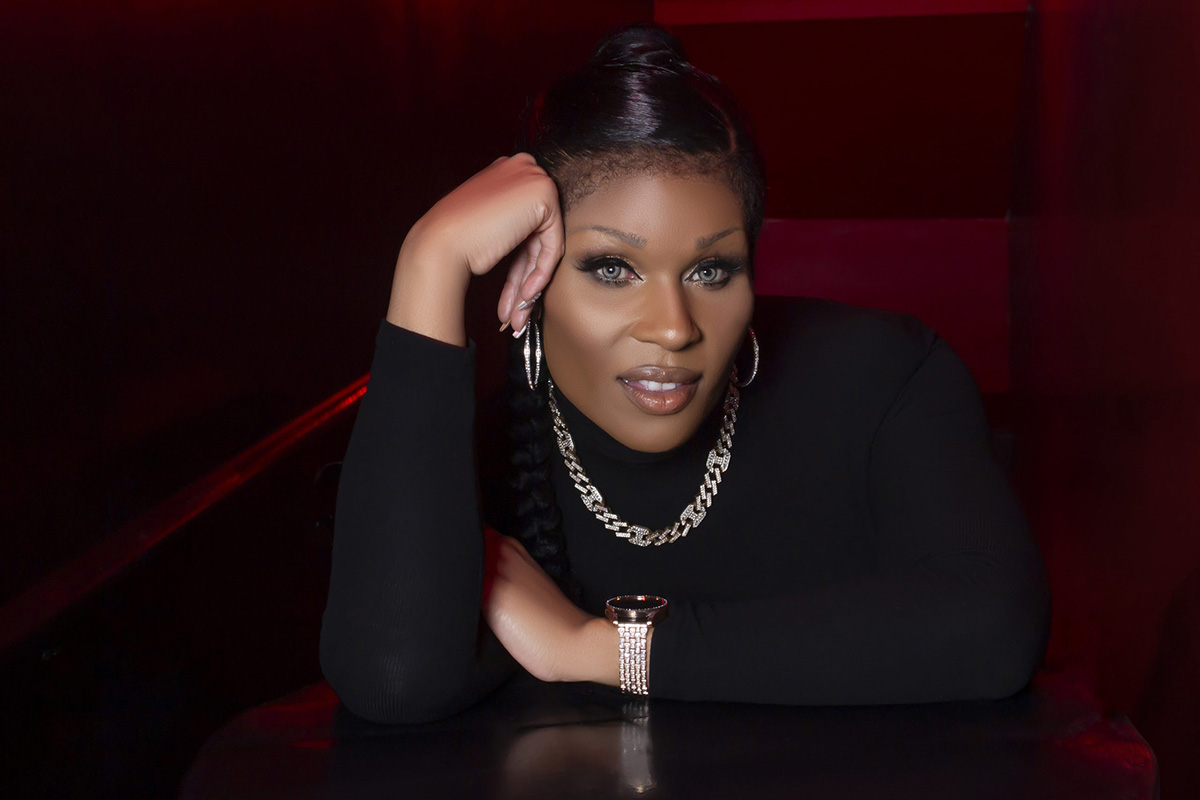
As an entertainer, there’s not much that Peppermint hasn’t done. She’s a singer, actor, songwriter, reality TV personality, drag queen, podcaster and the list goes on. Most importantly, as an activist she has been an invaluable role model for the trans, queer, and Black communities.
She’s a trailblazer who boasts an impressive list of ‘firsts.’ She is the first out trans contestant to be cast on “RuPaul’s Drag Race” (Season 9). She is the first trans woman to originate a principal musical role for Broadway’s “Head Over Heels.” She was also the first trans woman to compete in the runaway hit series “Traitors,” on Peacock, and she is the ACLU’s first-ever Artist Ambassador for Trans Justice. Her accolades are a true testament of the courage it took for Peppermint to live her authentic self.
We caught up with Peppermint to chat about her activism, taking on bigger roles on screen, our current political and social climate and life beyond the lens. For Peppermint, coming out as trans was not just a moment of strength—it was a necessity.
“It unfolded exactly as I had imagined it in terms of just feeling good and secure about who I am. I was in so much pain and sort of misery and anguish because I wasn’t able to live as free as I wanted to and that I knew that other people do when they just wake up. They get dressed, they walk out the door and they live their lives. Being able to live as your authentic self without fear of being persecuted by other people or by the government is essential to being healthy,” Peppermint tells the Blade in an exclusive interview.
“I was not able to imagine any other life. I remember saying to myself, ‘If I can’t imagine a life where I’m out and free and feeling secure and confident and left alone, then I don’t even want to imagine any kind of a life in the future,’” says Peppermint.
Recently, Peppermint returned for season 2 of Netflix’s comedy “Survival of the Thickest.” She added some spice and kick to the first season in her role as a drag bar owner. This time around, her character moves center stage, as her engagement and wedding become a major plot line in the show. Her expanded role and high-profile trans representation come at just the right time.
“It’s the largest acting role I’ve ever had in a television show, which my acting degree thanks me. It feels right on time, in a day where they’re rolling back trans rights and wanting to reduce DEI and make sure that we are limited from encouraging companies, corporations, industries, and institutions from not only featuring us, but supporting us, or even talking about us, or even referencing us.
“It feels great to have something that we can offer up as resistance. You can try to moralize, but it’s tougher to legislate art. So it feels like this is right on time and I’m just really grateful that they gave me a chance and that they gave my character a chance to tell a greater story.
Peppermint’s expanded role also accompanies a boom in queer representation in Black-powered media. Networks like BET and Starz and producers like Tyler Perry, are now regularly showcasing queer Black folks in main story lines. What does Peppermint think is fueling this increased inclusion?
“Queer folks are not new and queer Black folks are not new and Black folks know that. Every Black person knows at least one person who is queer. We are everywhere. We have not always been at the forefront in a lot of storytelling, that’s true, and that’s the part that’s new. It’s Hollywood taking us from the place where they usually have held us Black, queer folks in the makeup room, or as the prostitute, as an extra—not that there’s anything wrong with sex work or playing a background performer. I’ve played the best of the hookers! But those [roles] are very limiting.
“Hollywood has not historically done and still does not do a very good job of, including the voices of the stories that they make money [on]. And I think they’re realizing [the need] to be inclusive of our stories and our experiences, because for a long time it was just our stories without our actual experiences. It’s also exciting. It’s dramatic. It makes money. And they’re seeing that. So I think they’re just dipping their toes in. I think that they’re going to realize that balance means having us there in the room.”
Peppermint’s activism is tireless. She has raised more than six figures for prominent LGBTQ rights groups, she continues to speak around the nation, appears regularly on major media outlets addressing trans and LGBTQ issues and has been honored by GLAAD, World of Wonder, Out magazine, Variety, Condé Nast and more—all while appearing on screen and onstage in a long list of credits.
Now, under the Trump administration, she doesn’t have time to take a breath.
“I wouldn’t be able to do it if it weren’t second nature for me. Of course, there are ups and downs with being involved with any social issue or conversation and politics. But I am, for now, energized by it. It’s not like I’m energized by like, ‘Ooh, I just love this subject!’ right? It’s like, ‘Oh, we’re still being discriminated against, we gotta go and fight.’
“That’s just what it is. I get energy because I feel like we are quite literally fighting for our lives. I know that is hyperbole in some regards, but they are limiting access to things like housing, healthcare, job security and not having identification. Passport regulations are being put in a blender.”
Peppermint also mentions her thoughts on the unfair mandates to remove trans service members and revoke the rights and resources from the veterans who worked their whole lives to fight for this country.
“When you strip all these things away, it makes it really difficult for people to have a life and I know that that is what they’re doing. When I look around and see that that is what is at stake, I certainly feel like I’m fighting for my life. And that’s energizing.
“The only thing that would be the most rewarding besides waking up in a utopia and suddenly we’re all equal and we’re not discriminating against each other—which probably is not happening this year—is to be able to be involved in a project like this, where we can create that world. It’s also being built by people who are a part of that story in real life and care about it in real life.”
Peppermint is clear on her point that now is the time for all of the letters of the LGBTQ community to come together. Everyone who is trans and queer should be joining the fight against the issues that affect us all.
“Just trust us and understand that our experiences are tied together. That is how and why we are discriminated against in the way[s] that we are. The people who discriminate—just like how they can’t really distinguish between somebody who’s Dominican and somebody who’s African American — you’re Black when you’re getting pulled over. We are discriminated against in much the same way. It’s the same with being trans or queer or gender non-conforming or bi, we all have our own experiences and they should be honored.
“When laws are being created to harm us, we need to band together, because none of y’all asses is gonna be able to stop them from getting rid of marriage equality—which is next. If you roll the tape back to three years ago when somebody was trying to ask me about drag queen bans on readings in school, I was saying they’re coming for trans rights, which comes for bodily autonomy and abortion rights, which comes for gay marriage rights. Those three things will be wiped out.
Peppermint doesn’t take a pause to get fired up and call gay folk out in their obligation to return the favor to the Black trans community.
She shares with us her final thoughts.
“You cis-gender homosexuals need to stand the fuck up and understand that we are standing in front of you. It’s very difficult to understand this and know this, but so many of the rights that we have were hard fought and won by protest and by people fighting very hard for them. And many of those people in every single instance from the suffrage movement, obviously Civil Rights, queer rights, the AIDS and HIV movement—Black queer people have been there the entire time. Trans people have always been a part of that story, including Stonewall. Yes, we are using different terminology. Yes, we have different lenses to view things through, but let me tell you, if you allow us to be sacrificed before you see us go off the side, you will realize that your foot is shackled to our left foot. So, you better stand the fuck up!”
Peppermint for president!
a&e features
Tristan Schukraft on keeping queer spaces thriving
New owner of LA’s Abbey expands holdings to Fire Island, Mexico
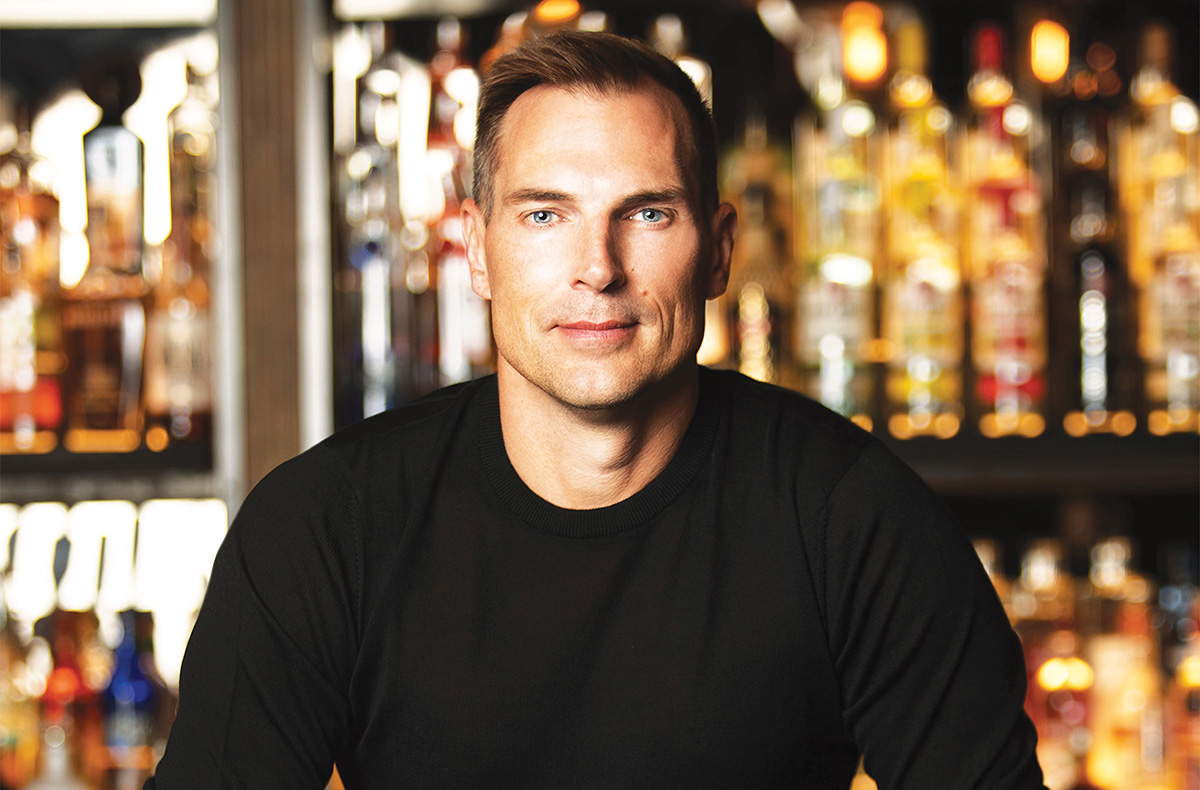
LOS ANGELES — Like the chatter about Willy Wonka and his Chocolate Factory, the West Hollywood community here started to whisper about the man who was going to be taking over the world-famous Abbey, a landmark in Los Angeles’s queer nightlife scene. Rumors were put to rest when it was announced that entrepreneur Tristan Schukraft would be taking over the legacy created by Abbey founder David Cooley. All eyes are on him.
For those of us who were there for the re-opening of The Abbey, when the torch was officially passed, all qualms about the new regime went away as it was clear the club was in good hands and that the spirit behind the Abbey would forge on. Cher, Ricky Martin, Bianca del Rio, Jean Smart, and many other celebrities rubbed shoulders with veteran patrons, and the evening was magical and a throwback to the nightclub atmosphere pre-COVID.
The much-talked-about purchase of the Abbey was just the beginning for Schukraft. It was also announced that this business impresario was set to purchase the commercial district of Fire Island, as well as projects launching in Mexico and Puerto Rico. What was he up to? Tristan sat down with the Blade to chat about it all.
“We’re at a time right now when the last generation of LGBT entrepreneurs and founders are all in their 60s and they’re retiring. And if somebody doesn’t come in and buy these places, we’re going to lose our queer spaces.”
Tristan wasn’t looking for more projects, but he recounts what happened in Puerto Rico. The Atlantic Beach Hotel was the gay destination spot and the place to party on Sundays, facing the gay beach. A new owner came in and made it a straight hotel, effectively taking away a place of fellowship and history for the queer community. Thankfully, the property is gay again, now branded as the Tryst and part of Schukraft’s portfolio with locations in Puerto Vallarta and Fire Island.
“If that happens with the Abbey and West Hollywood, it’s like Bloomingdale’s in a mall. It’s kind of like a domino effect. So that’s really what it is all about for me at this point. It has become a passion project, and I think now more than ever, it’s really important.”
Tristan is fortifying spaces for the queer community at a time when the current administration is trying to silence the LGBTQ+ community. The timing is not lost on him.
“I thought my mission was important before, and in the last couple of months, it’s become even more important. I don’t know why there’s this effort to erase us from public life, but we’ve always been here. We’re going to continue to be here, and it brings even more energy and motivation for me to make sure the spaces that I have now and even additional venues are protected going in the future.”
The gay community is not always welcoming to fresh faces and new ideas. Schukraft’s takeover of the Abbey and Fire Island has not come without criticism. Who is this man, and how dare he create a monopoly? As Schukraft knows, there will always be mean girls ready to talk. In his eyes, if someone can come in and preserve and advance spaces for the queer community, why would we oppose that?
“I think the community should be really appreciative. We, as a community, now, more than ever, should stand together in solidarity and not pick each other apart.”
As far as the Abbey is concerned, Schukraft is excited about the changes to come. Being a perfectionist, he wants everything to be aligned, clean, and streamlined. There will be changes made to the DJ and dance booth, making way for a long list of celebrity pop-ups and performances. But his promise to the community is that it will continue to be the place to be, a place for the community to come together, for at least another 33 years.
“We’re going to build on the Abbey’s rich heritage as not only a place to go at night and party but a place to go in the afternoon and have lunch. That’s what David Cooley did that no others did before, is he brought the gay bar outside, and I love that.”
Even with talk of a possible decline in West Hollywood’s nightlife, Schukraft maintains that though the industry may have its challenges, especially since COVID, the Abbey and nightlife will continue to thrive and grow.
“I’m really encouraged by all the new ownership in [nightlife] because we need another generation to continue on. I’d be more concerned if everybody was still in their sixties and not letting go.”
In his opinion, apps like Grindr have not killed nightlife.
“Sometimes you like to order out, and sometimes you like to go out, and sometimes you like to order in, right? There’s nothing that really replaces that real human interaction, and more importantly, as we know, a lot of times our family is our friends, they’re our adopted family.
Sometimes you meet them online, but you really meet them going out to bars and meeting like-minded people. At the Abbey, every now and then, there’s that person who’s kind of building up that courage to go inside and has no wingman, doesn’t have any gay friends. So it’s really important that these spaces are fun, to eat, drink, and party. But they’re really important for the next generation to find their true identity and their new family.”
There has also been criticism that West Hollywood has become elitist and not accessible to everyone in the community. Schukraft believes otherwise. West Hollywood is a varied part of queer nightlife as a whole.
“West Hollywood used to be the only gay neighborhood, and now you’ve got Silver Lake and you’ve got parts of Downtown, which is really good because L.A., is a huge place. It’s nice to have different neighborhoods, and each offers its own flavor and personality.”
Staunch in his belief in his many projects, he is not afraid to talk about hot topics in the community, especially as they pertain to the Abbey. As anyone who goes to the Abbey on a busy night can attest to, the crowd is very diverse and inclusive. Some in the community have started to complain that gay bars are no longer for the gay community, but are succumbing to our straight visitors.
Schukraft explains: “We’re a victim of our own success. I think it’s great that we don’t need to hide in the dark shadows or in a hole-in-the-wall gay bar. I’m happy about the acceptance. I started Tryst Hotels, which is the first gay hotel. We’re not hetero-friendly, we’re not gay-friendly. We’re a gay hotel and everyone is welcome. I think as long as we don’t change our behavior or the environment in general at the Abbey, and if you want to party with us, the more than merrier.”
Schukraft’s message to the community?
“These are kind of dangerous times, right? The rights that we fought for are being taken away and are being challenged. We’re trying to be erased from public life. There could be mean girls, but we, as a community, need to stick together and unite, and make sure those protections and our identity aren’t erased. And even though you’re having a drink at a gay bar, and it seems insignificant, you’re supporting gay businesses and places for the next generation.”
a&e features
Creator Max Mutchnick on inspirations for ‘Mid-Century Modern’
Real-life friendships and loss inform plot of new Hulu show
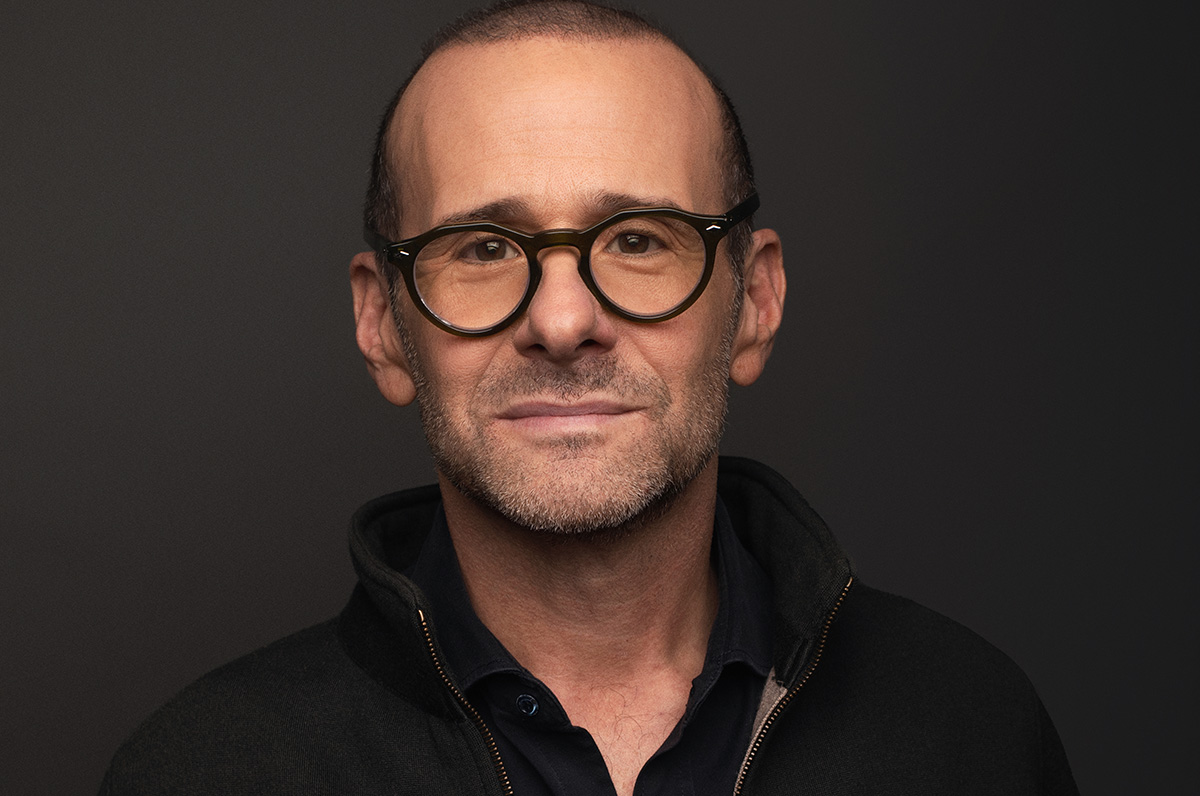
It’s been a long time – maybe 25 years when “Will & Grace” debuted – since there’s been so much excitement about a new, queer sitcom premiering. “Mid-Century Modern,” which debuted on Hulu last week, is the creation of Max Mutchnick and David Kohan, the gay men who were also behind “Will & Grace.”
Set in Palm Springs, Calif., following the death of the one of their closest friends, three gay men gather to mourn. Swept up in the emotions of the moment, Bunny (Nathan Lane) suggests that Atlanta-based flight attendant Jerry (Matt Bomer) and New York-based fashion editor Arthur (Nathan Lee Graham) move into the mid-century modern home he shares with his mother Sybil (the late Linda Lavin). Over the course of the first season’s 10 episodes, hilarity ensues. That is, except for the episode in which they address Sybil’s passing. The three male leads are all fabulous, and the ensemble cast, including Pamela Adlon as Bunny’s sister Mindy, and the stellar line-up of guest stars, such as Jesse Tyler Ferguson, Vanessa Bayer, Richard Kind, and Cheri Oteri, keep humor buzzing. Shortly before the premiere of “Mid-Century Modern,” Mutchnick made time for an interview with the Blade.
BLADE: I’d like to begin by saying it’s always a delight to speak to a fellow Emerson College alum. In ways would you say that Emerson impacted your professional and creative life?
MAX MUTCHNICK: I think Emerson was the first place that reflected back to me that my voice, my thoughts were good, and they were worth listening to. I developed a confidence at Emerson that did not exist in my body and soul. It was a collection of a lot of things that took place in Boston, but I mean we can just put it all under the Emerson umbrella.
BLADE: Before “Will & Grace,” you co-created the NBC sitcom “Boston Common,” which starred fellow Emerson alum Anthony Clark. Is it important for you to maintain those kinds of alumni relationships?
MUTCHNICK: Because Emersonians are such scrappy little monkeys and they end up being everywhere in the world, you can’t help but work with someone from Emerson at some point in your career. I’m certainly more inclined to engage with someone from Emerson once I learn that they went to my alma mater. For me, it has much more to do with history and loyalty. I don’t think of myself as one of those guys that says, “Loyalty means a lot to me. I’m someone that really leans into history.” It’s just what my life and career turned out to be. The longer I worked with people and the more often I worked with them, the safer that I felt, which means that I was more creative and that’s the name of the game. I’ve got to be as comfortable as possible so I can be as creative as possible. If that means that a person from Emerson is in the room, so be it. (Costume designer) Lori Eskowitz would be the Emerson version. And then (writer and actor) Dan Bucatinsky would be another version. When I’m around them for a long time, that’s when the best stuff comes.
BLADE: Relationships are important. On that subject, your new Hulu sitcom “Mid-Century Modern” is about the longstanding friendship among three friends, Bunny (Nathan Lane), Jerry (Matt Bomer), and Arthur (Nathan Lee Graham). Do you have a friendship like the one shared by these three men?
MUTCHNICK: I’m absolutely engaged in a real version of what we’re projecting on the show. I have that in my life. I cannot say that I’m Jerry in any way, but the one thing that we do have in common is that in my group, I’m the young one. But I think that that’s very common in these families that we create. There’s usually a young one. Our culture is built on learning from our elders. I didn’t have a father growing up, so maybe that made me that much more inclined to seek out older, wiser, funnier, meaner friends. I mean the reason why you’re looking at a mouthful of straight, white teeth is because one of those old bitches sat across from me about 25 years ago at a diner and said, “Girl, your teeth are a disaster, and you need to get that fixed immediately.” What did I know? I was just a kid from Chicago with two nickels in my pocket. But I found three nickels and I went and had new teeth put in my head. But that came from one of my dearest in the group.
BLADE: Do you think that calling “Mid-Century Modern” a gay “Golden Girls” is a fair description?
MUTCHNICK: No. I think the gay “Golden Girls” was really just used as a tool to pitch the show quickly. We have an expression in town, which is “give me the elevator pitch,” because nobody has an attention span. The fastest way you can tell someone what David (Kohan) and I wanted to write, was to say, “It’s gay Golden Girls.” When you say that to somebody, then they say, “OK, sit down now, tell me more.” We did that and then we started to dive into the show and realized pretty quickly that it’s not the gay “Golden Girls.” No disrespect to the “Golden Girls.” It’s a masterpiece.
BLADE: “Mid-Century Modern” is set in Palm Springs. I’m based in Fort Lauderdale, a few blocks south of Wilton Manors, and I was wondering if that gay enclave was ever in consideration for the setting, or was it always going to be in Palm Springs?
MUTCHNICK: You just asked a really incredible question! Because, during COVID, Matt Bomer and I used to walk, because we live close by. We had a little walking group of a few gay gentlemen. On one of those walks, Matt proposed a comedy set in Wilton Manors. He said it would be great to title the show “Wilton Manors.” I will tell you that in the building blocks of what got us to “Mid-Century Modern,” Wilton Manors, and that suggestion from Matt Bomer on our COVID walks, was part of it.
BLADE: Is Sybil, played by the late Linda Lavin, modeled after a mother you know?
MUTCHNICK: Rhea Kohan (mother of David and Jenji). When we met with Linda for the first time over Zoom, when she was abroad, David and I explained to her that this was all based on Rhea Kohan. In fact, some of the lines that she (Sybil) speaks in the pilot are the words that Jenji Kohan spoke about her mother in her eulogy at the funeral because it really summed up what the character was all about. Yes, it’s very much based on someone.
BLADE: The Donny Osmond jokes in the second episode of “Mid-Century Modern” reminded me of the Barry Manilow “fanilows” on “Will & Grace.” Do you know if Donny is aware that he’s featured in the show?
MUTCHNICK: I don’t. To tell you the truth, the “fanilow” episode was written when I was not on the show. I was on a forced hiatus, thanks to Jeff Zucker. That was a show that I was not part of. We don’t really work that way. The Donny Osmond thing came more from Matt’s character being a Mormon, and also one of the writers. It’s very important to mention that the writing room at “Mid-Century Modern,” is (made up of) wonderful and diverse and colorful incredible humans – one of them is an old, white, Irish guy named Don Roos who’s brilliant…
BLADE: …he’s Dan Bucatinsky’s husband.
MUTCHNICK: Right! Dan is also part of the writing room. But I believe it was Don who had a thing for Donny, and that’s where it comes from. I don’t know if Donny has any awareness. The only thing I care about when we turn in an episode like that is I just want to hear from legal that we’re approved.
BLADE: “Mid-Century Modern” also includes opportunities for the singers in the cast. Linda Lavin sang the Jerome Kern/Ira Gershwin tune “Long Ago (And Far Away)” and Nathan Lane and the guys sang “He Had It Coming” from “Chicago.” Was it important to give them the chance to exercise those muscles?
MUTCHNICK: I don’t think it was. I think it really is just the managers’ choice. David Kohan and I like that kind of stuff, so we write that kind of stuff. But by no means was there an edict to write that. We know what our cast is capable of, and we will absolutely exploit that if we’re lucky enough to have a second season. I have a funky relationship with the song “Long Ago (And Far Away).” It doesn’t float my boat, but everybody else loved it. We run a meritocracy, and the best idea will out. That’s how that song ended up being in the show. I far prefer the recording of Linda singing “I’ll Be Seeing You” over her montage in episode eight, “Here’s To You, Mrs. Schneiderman.” We were just lucky that Linda had recorded that. That recording was something that she had done and sent to somebody during COVID because she was held up in her apartment. That’s what motivated her to make that video and send it. That’s how we were able to use that audio.
BLADE: Being on a streaming service like Hulu allows for characters to say things they might not get away with on network TV, including a foreskin joke, as well as Sybil’s propensity for cursing.
MUTCHNICK: And the third line in the show is about him looking like a “reluctant bottom.” I don’t think that’s something you’re going to see on ABC anytime soon. David and I liked the opportunity to open up the language of this show because it might possibly open the door to bringing people…I’m going to mix metaphors…into the tent that have never been there before. A generation that writes off a sitcom because that language and that type of comedy isn’t the way that they sound. One of the gifts of doing this show on Hulu is that we get to write dialogue that sounds a little bit more like you and I sound. As always, we don’t want to do anything just to do it.
BLADE: It didn’t feel that way.
MUTCHNICK: It’s there when it’s right. [Laughs] I want to have a shirt made with Linda’s line, as her mother always used to say, “Time is a cunt.”
BLADE: “Mid-Century Modern” also utilizes a lot of Jewish humor. How important is it for you to include that at this time when there is a measurable rise in anti-Semitism?
MUTCHNICK: I think it’s important, but I don’t think it’s the reason why we did it. We tried very hard to not write from a place of teaching or preaching. We really are just writing about the stuff that makes us laugh. One of the things that makes something better and something that you can invest in is if it’s more specific. We’re creating a character whose name is Bunny Schneiderman and his mother’s name is Sybil and they made their money in a family-run business, it gets Jewy, and we’re not going to shy away from it. But we’re definitely not going to address what’s going on in the world. That doesn’t mean I don’t find it very upsetting, but I’m writing always from the point of view of entertaining the largest number of people that I can every week.
BLADE: “Mid-Century Modern” has a fantastic roster of guest stars including Jesse Tyler Ferguson, Vanessa Bayer, Billie Lourd, Cheri Oteri, Richard Kind, Rhea Perlman, and Judd Hirsch. Are there plans to continue that in future seasons?
MUTCHNICK: Yes. As I keep saying, if we’re so lucky that we get to continue, I don’t want to do “The Love Boat.” Those are fine comic actors, so I don’t think it feels like that. But if we get to keep going, what I want to do is broaden the world because that gives us more to write about. I want to start to introduce characters that are auxiliary to the individuals. I want to start to meet Arthur’s family, so we can return to people. I want to introduce other neighbors, and different types of gay men because we come in so many different flavors. I think that we should do that only because I’m sure it’s what your life is and it’s what my life is. I’ve got a lot of different types. So, yes, we will be doing more.
BLADE: Finally, Linda Lavin passed away in December 2024, and in a later episode, the subject of her character Sybil’s passing is handled sensitively, including the humorous parts.
MUTCHNICK: We knew we had a tall order. We suffered an incredible loss in the middle of making this comedy. One of the reasons why I think this show works is because we are surrounded by a lot of really talented people. Jim Burrows and Ryan Murphy, to name two. Ryan played a very big role in telling us that it was important that we address this, that we address it immediately. That we show the world and the show goes on. That wasn’t my instinct because I was so inside the grief of losing a friend, because she really was. It wasn’t like one of those showbizzy-type relationships. And this is who she was, by the way, to everybody at the show. It was the way that we decided to go. Let’s write this now. Let’s not put this at the end of the season. Let’s not satellite her in. Let’s not “Darren Stevens” the character, which is something we would never do. The other thing that Jim Burrows made very clear to us was the import of the comedy. You have to write something that starts exactly in the place that these shows start. A set comedy piece that takes place in the kitchen. Because for David and me, as writers, we said we just want to tell the truth. That’s what we want to do with this episode and that’s the way that this will probably go best for us. The way that we’ve dealt with grief in our lives is with humor. That is the way that we framed writing this episode. We wanted it to be a chapter from our lives, and how we experience this loss and how we recover and move on.
-
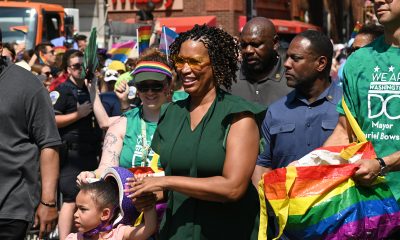
 District of Columbia5 days ago
District of Columbia5 days agoFinal push to raise funds, fill D.C. hotels as WorldPride nears
-

 El Salvador3 days ago
El Salvador3 days agoGay Venezuelan makeup artist remains in El Salvador mega prison
-

 District of Columbia4 days ago
District of Columbia4 days agoReenactment of 1965 gay rights protest at White House set for April 17
-
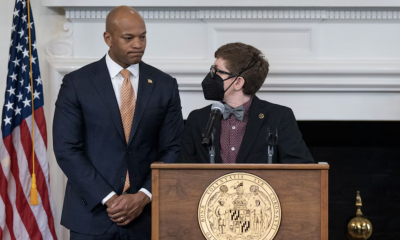
 Maryland5 days ago
Maryland5 days agoFreeState Justice: Transgender activist ‘hijacked’ Moore’s Transgender Day of Visibility event

